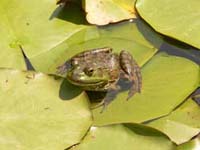Winter covers the mountain world of the Kootenays under a thick layer of snow. Snow provides the basis of the hydraulic cycle on which all life forms depend.
Quite often the snow stays on the northern slopes all year and becomes the water source to feed lakes and streams without interruption.
Forming glass clear creeks the water finds its way into the valleys. In small brooks it springs though alpine meadows, it comes to a halt in beautiful quiet mountain lakes, it rushes down though steep gorges, form giant water falls, and cuts deep canyons out of the rocky slopes before coming to a slow flow in deep lakes and wider rivers.
In different altitudes water creates different biotopes inhabited by different species. All systems are characterized by the same fragile balance. Only intact water flow and water quality guarantee that the many lower animals, insects, amphibians, reptiles, fishes, birds and mammals up to humans can life in a healthy food chain with each other.
The circular water pond at Hoder Creek and the out flowing shallow head run of the creek with its gavel bottom provides spawning grounds for the red listed bull trout.
The largest river in the Kootenays is the Columbia River. Hydroelectric dams, more than 150 alone on the USA side, block the great Pacific salmon from returning into the local Streams and creeks of the Columbia basin.
The lakes of the Kootenays are inhabited by Kokanee salmon. These are landlocked and permanent in freshwater living smaller relatives of the sea wandering large Sockeye salmon. Shallow spawning grounds for Kokanees have been built at Kokanee Park near Nelson and in Meadow Creek. Here spectators can watch their impressive spawning ritual.
In the water landscape close by of Haus lemon Creek and Haus Beaver Castle visitors can discover the abundance of creatures which inhabit the biotope right at our back door.

To Photo Gallery |
